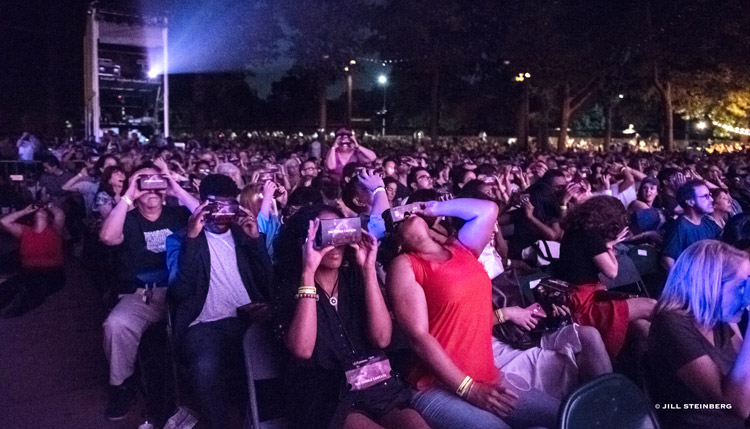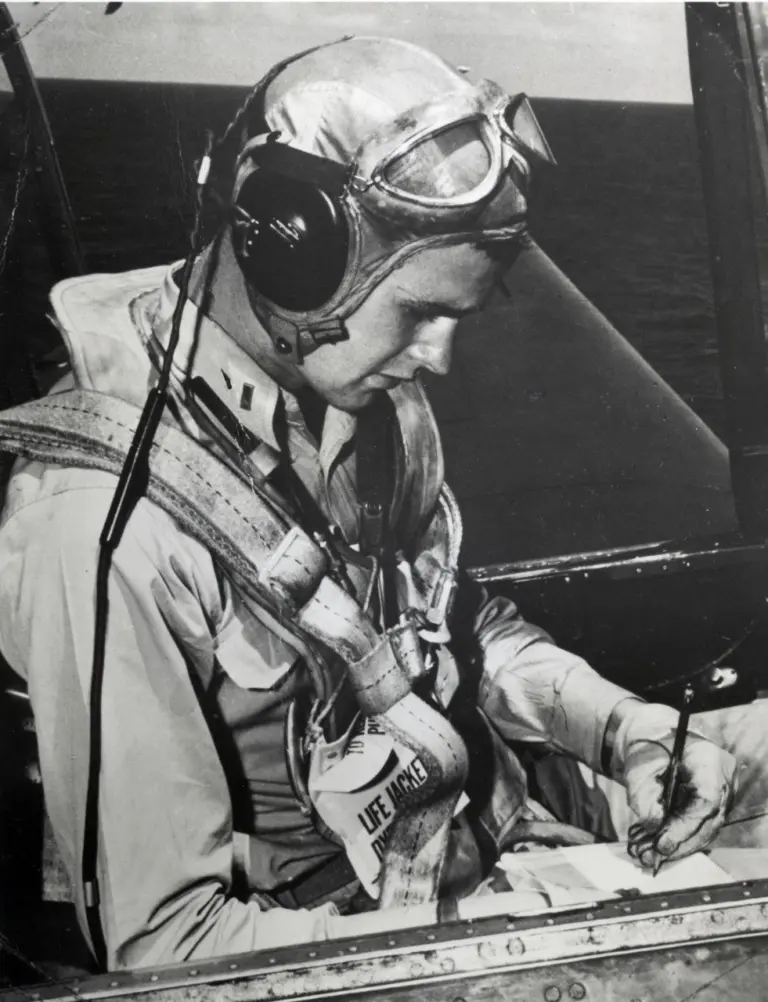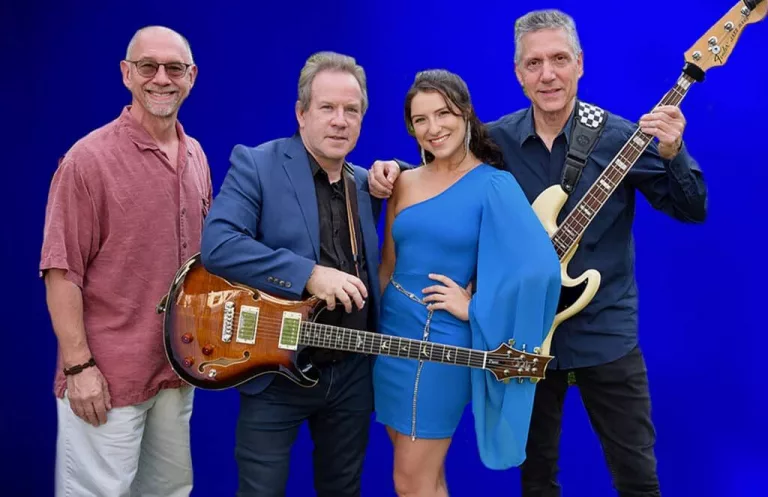

By Anne W. Semmes
Sentinel Columnist
“The most magical moment was when the VR film began the whole crowd of 6,000 gasped! They were seeing what the Hubble Space Telescope sees. They were experiencing the birth, life and death of a star.”
So expresses Greenwich’s prize-winning, newly energized filmmaker Eliza McNitt, after the world premiere of her first virtual reality (VR) film with 360-degree surround sound in Prospect Park, Brooklyn. Her film was the finale of the Aug. 9 premier performance of “The Hubble Cantata,” with its 20-piece orchestra, 100-person choir, Metropolitan opera stars, and onstage astrophysicist, Mario Livio.
McNitt marveled at how the 6,000 free-admission guests had readily equipped their smartphones with the special app they synched with a provided Google cardboard VR headset to fully experience McNitt’s five-and-a-half-minute film of breathtaking views of the cosmos captured by the Hubble Space Telescope.
“It was a historic moment for virtual reality,” says McNitt. “No one has done this before. We took a big risk. It’s been so rewarding to see people’s reactions.”
McNitt, now a Manhattanite, took time out from a weekend visit with her parents, Audrey Appleby and Jim McNitt, to bask in the worldwide reviews and share the back story of her memorable part in that multi-faceted performance of “The Hubble Cantata.”
Ever since McNitt was a Greenwich High School top winner of the Intel International Science and Engineering Fair for her documentary film “Requiem for the Honeybee” on the Honeybee Colony Collapse Disorder, she’s been on a prize-winning track of interpreting science in film. But moving into virtual reality was a giant step up.

“It’s much more complex to make a virtual reality experience,” she says. “It’s the enormousness of collaboration, involving artists, filmmakers, sound designers and scientists. It goes beyond story telling. It’s about discovery and the individual experience. Its redefining experience for people.”
She speaks of the “challenging process” of getting that experience into the hands of those 6,000 in Prospect Park. “We had to pay for the Google headsets, and figure out how the 6,000 should watch this film,” and how to provide the necessary Wi-Fi. “We got Time Warner Cable to come and unlock the broadband network.”
McNitt tells of being contacted four years ago by Paola Prestini, the composer of “The Hubble Cantata,” to put together some “innovative visuals,” for viewers “to have the experience of floating in the cosmos.”
“I developed a narrative through Paola’s libretto that tells the story of the cosmic connections between humans and the stars,” McNitt says. She would feature in her film the Orion Nebula, an iconic image from the Hubble Telescope, for its being “a nursery for star birth,” and for its reflecting the themes of “The Hubble Cantata.”
Her next idea was what better way to tell the story than “to engage virtual reality.” But how? “I had no idea how to do this,” she admits.
Virtual reality was not part of McNitt’s education at NYU’s Tisch School of the Arts. “It was just beginning to take off when I graduated,” she says. Her one experience with VR was a film she saw in 2014 called “Leviathan.” “I put on the headset and I was on a roller coaster. Oh, my God—it was overwhelming,” she says, showing herself at that aha moment on her iPhone.
A visit in January to the Sundance Film Festival brought help. “I met VR producer Jess Engel, who introduced me to a team that figured out how to do this virtual reality experience,” says McNitt. “They helped bring it all together.” Her team included a master visual effects supervisor, animators from around the world, and a “creative technologist.”
“We set out to redefine the VR experience usually given in a room alone,” she says, “to turn it on its head and create a VR experience with 360 degrees’ sound, with a live score. We started production in May.”

Two months later it was opening night, and “All of the viewers’ senses are impacted.” “We saw how thousands of people used these tools to approach the virtual reality. We saw them standing up and looking around and swinging their heads around.”
To help this interviewer enter this VR world, McNitt provided a Samsung VR headset placed over the eyes for a minute and a half intro to her film. Suddenly I am in outer space with the Hubble Telescope fast advancing towards me and, whoa, I’m being sucked into the lens of the telescope and out into the universe with millions of stars flowing around me, and ahead of me is the color-fused Orion’s Nebula, the birthplace of stars, my destination, and the beauty of it all brings tears just as the minute and a half preview ends.
So, when will others have the opportunity to see McNitt’s VR film? “We want to premiere the film at the Sundance Film Festival in January,” she says. But “We need to find funding for the installation and also for venues around the world,” such as the Sydney Opera House. “Virtual Reality is not cheap,” she adds. “Some VR experiences can cost as much as an independent feature film. (McNitt had received a grant for her VR film from Time Warner’s OneFifty, a “content incubator.”)
What’s next for McNitt? “I want to do a Ted Talk on using art and science to redefine the virtual reality experience for a large scale audience.” She’ll kick it off, she says, with that favorite DaVinci quotation she has on her website. “Study the science of art, study the art of science.”
“Virtual reality,” she says, “is a medium that I am taking to a world that has never seen it. There are so many ways to use this technology for experience and for storytelling.” Such as creating a VR experience about the ocean that’s on her list, and a possible feature film about science.
“Before I’m 30, it’s always been my dream to do this,” says McNitt, who at 24 years appears not to be wasting her time. As observed by her friend astrophysicist Mario Livio. “He told me when he was 24, he was doing nothing!”





